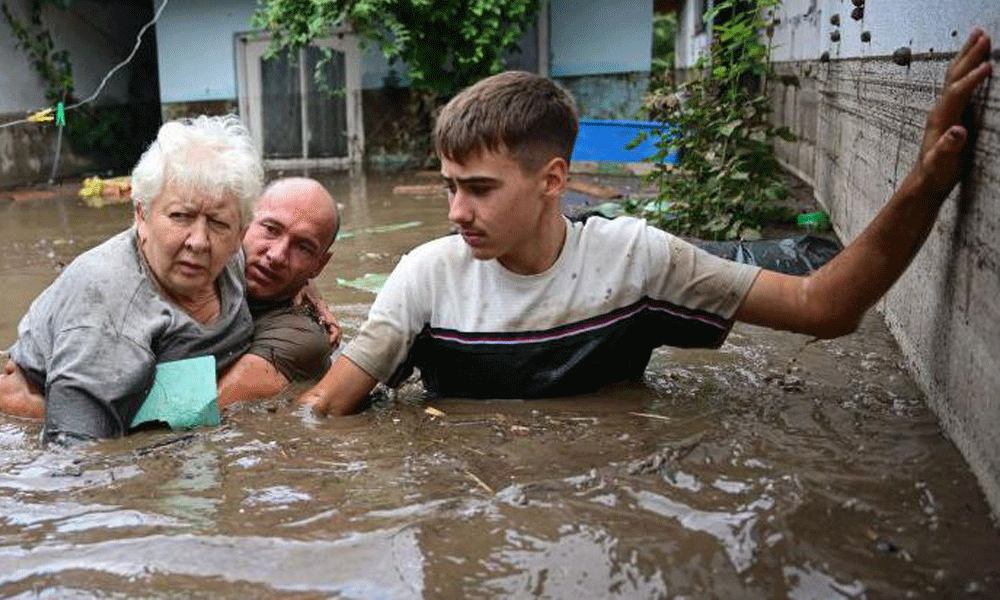
Local residents rescue a woman from rising flood waters in the Romanian village of Slobozia Conachi. Photo : AFP
Central Europe's devastating floods were made much worse by climate change and offer a stark glimpse of the future for the world's fastest-warming continent, scientists say.
Storm Boris has ravaged countries including Poland, the Czech Republic, Romania, Austria and Italy, leading to at least 24 deaths and billions of pounds of damage.
The World Weather Attribution (WWA) group said one recent four-day period was the rainiest ever recorded in central Europe - an intensity made twice as likely by climate change.
On a positive note, the storm was well forecast, meaning some regions were better prepared for it, likely avoiding more deaths.
Scientists at WWA work out how much of a role climate change played in an extreme weather event by comparing it with a model of how bad that storm, drought or heatwave might have been in a world where humans hadn't been burning fossil fuels for nearly 200 years.
The kind of rainfall unleashed by Boris is thankfully still rare – expected to occur about once every 100-300 years in today’s climate, which has warmed by about 1.3C due to greenhouse gas emissions.
But if warming reaches 2C, similar episodes will become an extra 5% more intense and 50% more frequent, the WWA warned.
Without more ambitious climate action, global warming is expected to reach around 3C by the end of the century.
“This is definitely what we will see much more of in the future,” said Friederike Otto, senior lecturer in climate science at Imperial College London and co-author of the WWA study.
"[It] is the absolute fingerprint signature of climate change [...] that records are broken by such a large margin."
The record rains fit into the broader pattern of how Europe’s climate is changing in a warming world.
Europe is the fastest-warming continent. The last five years were on average around 2.3C warmer than the second half of the 19th Century, according to the Copernicus climate service.
This not only brings much more frequent and intense heatwaves, but also more extreme rainfall, particularly over north and central Europe. The picture is more complicated in southern Europe, due to shifts in large-scale weather patterns.
The simplest reason for more intense rainfall in a hotter world is that a warmer atmosphere can hold more moisture – about 7% for every 1C. This extra moisture can lead to heavier rainfall.
Source : BBC

